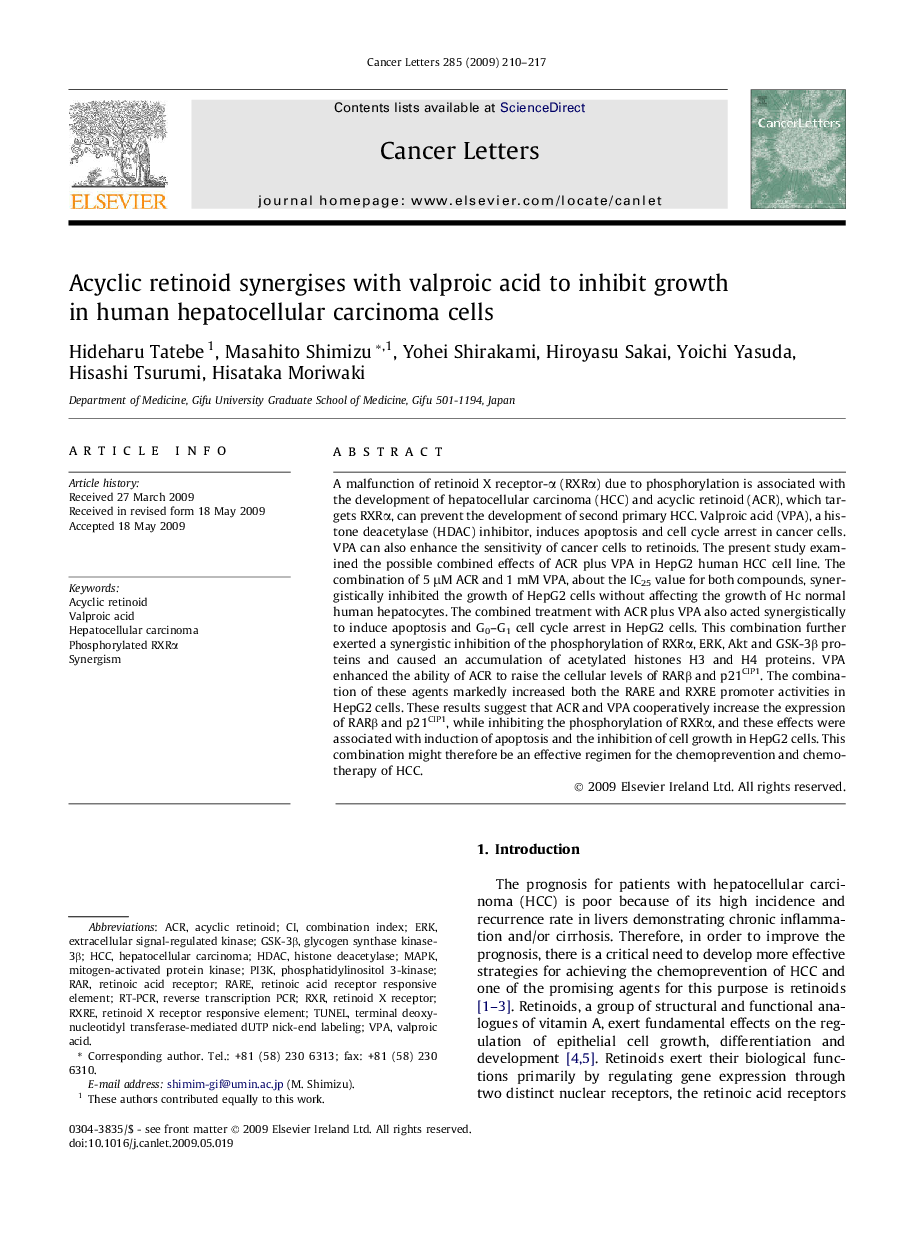| Article ID | Journal | Published Year | Pages | File Type |
|---|---|---|---|---|
| 2116527 | Cancer Letters | 2009 | 8 Pages |
A malfunction of retinoid X receptor-α (RXRα) due to phosphorylation is associated with the development of hepatocellular carcinoma (HCC) and acyclic retinoid (ACR), which targets RXRα, can prevent the development of second primary HCC. Valproic acid (VPA), a histone deacetylase (HDAC) inhibitor, induces apoptosis and cell cycle arrest in cancer cells. VPA can also enhance the sensitivity of cancer cells to retinoids. The present study examined the possible combined effects of ACR plus VPA in HepG2 human HCC cell line. The combination of 5 μM ACR and 1 mM VPA, about the IC25 value for both compounds, synergistically inhibited the growth of HepG2 cells without affecting the growth of Hc normal human hepatocytes. The combined treatment with ACR plus VPA also acted synergistically to induce apoptosis and G0–G1 cell cycle arrest in HepG2 cells. This combination further exerted a synergistic inhibition of the phosphorylation of RXRα, ERK, Akt and GSK-3β proteins and caused an accumulation of acetylated histones H3 and H4 proteins. VPA enhanced the ability of ACR to raise the cellular levels of RARβ and p21CIP1. The combination of these agents markedly increased both the RARE and RXRE promoter activities in HepG2 cells. These results suggest that ACR and VPA cooperatively increase the expression of RARβ and p21CIP1, while inhibiting the phosphorylation of RXRα, and these effects were associated with induction of apoptosis and the inhibition of cell growth in HepG2 cells. This combination might therefore be an effective regimen for the chemoprevention and chemotherapy of HCC.
